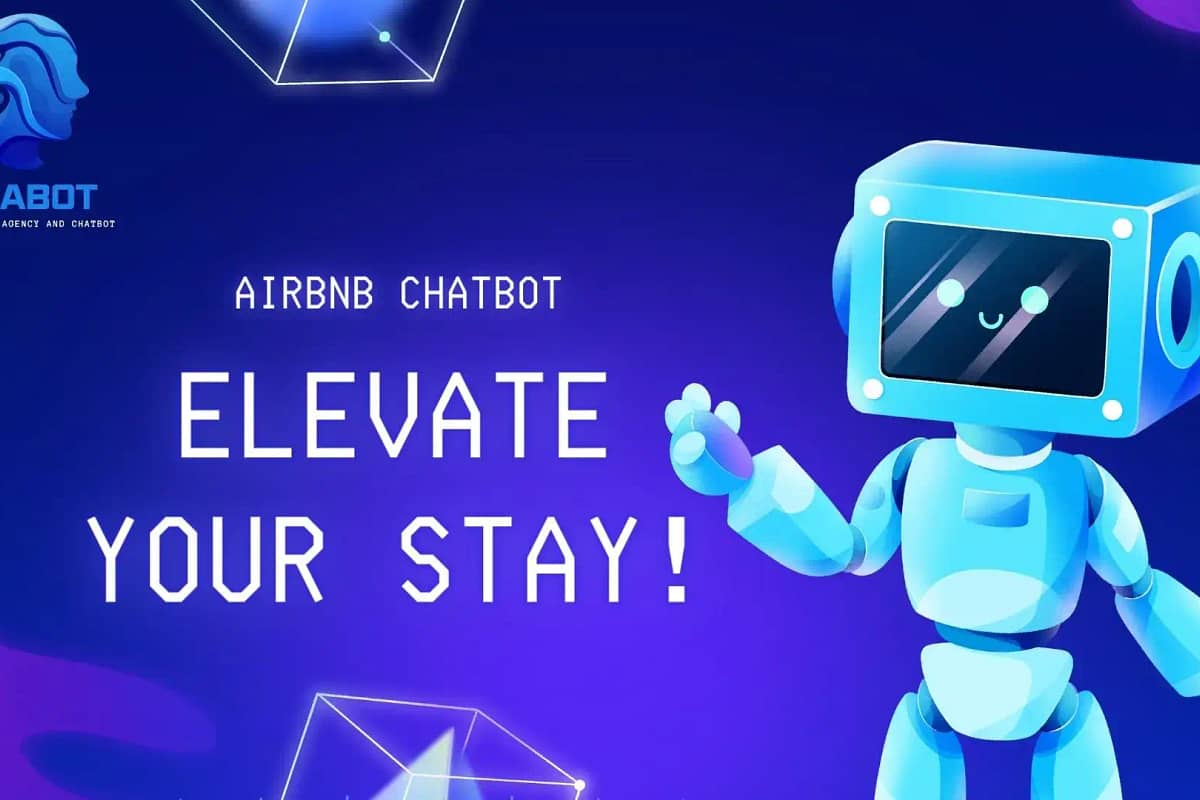Ever wondered how to create an AI chatbot that feels almost human? This guide will show you the ropes. Whether you’re a newbie or have some coding chops, building your own chatbot is within reach. We’ll dive into the essentials, from picking the right platform to training your bot with smart responses. By the end, you’ll be ready to deploy a chatbot that’s both functional and engaging. Ready to get started? Let’s jump in.
Key Takeaways
- Leverage Chatbots for Efficiency: Implement chatbots to streamline customer service and handle repetitive queries, freeing up human agents for complex tasks.
- Start Simple: Begin with basic chatbot functionalities and gradually add more features as you become comfortable with the technology.
- Utilize Available Tools: Use platforms like Ollabot, Dialogflow, Microsoft Bot Framework, or Chatfuel to simplify the process of building your chatbot.
- Optimize Regularly: Continuously monitor and update your chatbot based on user interactions and feedback to improve its performance.
- Explore Use Cases: Look into various industries and applications where chatbots have been successfully implemented to understand their potential benefits.
- Engage Users Effectively: Design your chatbot to provide a seamless and engaging user experience, ensuring it adds value to your audience.

Why Use Chatbots
Create an AI Chatbot to Automate Conversations
Implement AI chatbots to answer questions and resolve issues automatically. These bots can handle multiple inquiries at once. This reduces the workload on human agents.
Use automation to provide 24/7 customer support without human intervention. Customers get help anytime, even outside business hours. This boosts customer satisfaction.
Tailor chatbot responses to align with your brand’s voice and tone. This ensures consistency in communication. Customers feel more connected to your brand.
Enhance Customer Engagement
When you create an AI chatbot, you offer personalized assistance even when your team is offline. These bots can remember past interactions and provide tailored recommendations based on customer history.
Use chatbots to nurture leads by delivering relevant information and follow-ups. Once you create an AI chatbot, it can send reminders or updates about products and services, keeping potential customers engaged.
By engaging customers instantly, you improve overall satisfaction and loyalty. Quick responses make customers feel valued, and fast solutions lead to a better overall experience.
Improve Lead Management
Utilize chatbots to collect, qualify, and convert leads efficiently. Bots ask qualifying questions to understand customer needs. They gather essential information quickly.
Automate lead follow-ups to ensure no potential customer is missed. Bots can schedule follow-up messages or calls. This ensures timely communication with leads.
Integrate chatbots into your CRM to streamline lead management workflows. All data collected by bots goes directly into the CRM system. This helps in tracking and managing leads effectively.
Getting Started
Choose a Platform
Evaluate different chatbot platforms based on features and ease of use. Look for platforms that offer integration with multiple apps and services, which can streamline your operations as you create an AI chatbot.
Select a platform that allows customization to fit your specific business needs. Some popular options include Ollabot, Dialogflow, Microsoft Bot Framework, and IBM Watson. Each has unique features that may suit different requirements when you set out to create an AI chatbot.
Define Your Goals
Identify the primary objectives for implementing an AI chatbot. Common goals include customer support and lead generation. Knowing your main purpose will guide the development process.
Set measurable goals to track the chatbot’s performance and effectiveness. Metrics like response time, user satisfaction, and conversion rates are vital. Align chatbot goals with overall business objectives to ensure coherence. This alignment helps in achieving broader company aims.
Plan Your Chatbot’s Flow
Map out the conversation flow to cover various customer scenarios. Think about common questions and issues users might have. Design intuitive and user-friendly interactions to enhance user experience.
Include fallback options for complex queries that require human intervention. Not all questions can be answered by a bot. Having a system to escalate these queries ensures better service quality.
Build Your Chatbot
Use Free Tools
Start with free chatbot tools to test and understand their capabilities. Many platforms offer free trials, allowing you to explore advanced features before committing. Open-source chatbot frameworks provide cost-effective solutions to create an AI chatbot. These options help you grasp the basics without spending money.
Connect and Control Data
Integrate your chatbot with your existing data sources for accurate responses. This ensures that the information provided is relevant and up-to-date. Control what data your chatbot can access to maintain privacy and security. Use data analytics to refine responses and improve accuracy over time.
Integrate with Apps
Connect your chatbot with over 7,000 apps to enhance functionality. Automate workflows by integrating chatbots with CRM, email, and other tools. Ensure seamless communication between your chatbot and other business applications. This integration boosts efficiency and streamlines operations.
Optimize Your Chatbot
Test and Refine
Conduct thorough testing to identify and fix any issues in the chatbot’s flow. This ensures smooth interactions. Gather user feedback to make necessary adjustments and improvements. Real users provide valuable insights.
Continuously refine the chatbot to enhance its performance and user experience. Regular updates keep it efficient and engaging.
Monitor Performance
Track key performance indicators (KPIs) such as response time and resolution rate. These metrics show how well the chatbot performs. Use analytics to monitor chatbot interactions and identify areas for improvement.
Regularly review performance metrics to ensure the chatbot meets business goals. This helps maintain high standards.
Update Regularly
When you create an AI chatbot, it’s crucial to keep it updated with the latest information and responses. This practice prevents outdated or incorrect answers and ensures that your chatbot remains relevant.
Regularly adding new content and features will help maintain its effectiveness and align it with evolving customer needs and business objectives. By continuously updating your chatbot, you ensure that it stays current with trends and provides valuable interactions.

See What Chatbots Can Do
Success Stories
Many businesses have seen great results with AI chatbots. For example, H&M uses a chatbot to help customers find clothes. This has led to higher sales and customer satisfaction.
Another company, Sephora, uses a chatbot for beauty advice. Customers love the instant help and personalized tips. This has increased their engagement and loyalty.
Chatbots improve customer support too. Bank of America’s Erica chatbot helps customers with banking tasks. It has reduced wait times and improved service quality.
Business Benefits
AI chatbots offer several business benefits. They can reduce support costs by handling frequently asked questions. This saves time and money for companies.
Chatbots also help scale customer support without hiring more staff. They work 24/7, providing instant responses to customer queries.
Customer satisfaction improves with chatbots. They give quick and accurate answers, making customers happy and loyal.
Common Use Cases
Chatbots are useful in many areas. For instance, when you create an AI chatbot for customer service, it can handle common inquiries like order status or return policies, thereby freeing up human agents to tackle more complex issues.
In lead generation, if you create an AI chatbot, it can qualify leads by asking basic questions and then pass on the qualified leads to sales teams for follow-up.
In e-commerce, when you create an AI chatbot, it can assist customers with product recommendations, helping shoppers find what they need quickly and improving the overall shopping experience.

Final Remarks
You’ve now got the know-how to create a killer AI chatbot. From understanding why chatbots are game-changers to building and optimizing your own, you’re all set. Use this tech to engage your audience and streamline interactions.
Ready to dive in? Start building your chatbot today and see the magic unfold. Don’t wait—take action now and revolutionize how you connect with your users. Your future chatbot is just a few clicks away!
Frequently Asked Questions
Why should I use chatbots for my business?
Chatbots can automate customer service, improve response times, and increase customer satisfaction. They are available 24/7 and can handle multiple queries simultaneously.
How do I get started with creating a chatbot?
Begin by defining your chatbot’s purpose and target audience. Choose a platform or tool to build it, such as Ollabot, Dialogflow or Microsoft Bot Framework.
What are the basic steps to build a chatbot?
Start with designing the conversation flow. Develop the bot using a chatbot framework. Test it thoroughly before deployment. Finally, integrate it with your website or app.
How can I optimize my chatbot for better performance?
Regularly update your chatbot’s knowledge base. Monitor interactions to identify areas of improvement. Use analytics to track performance and make necessary adjustments.
What can chatbots do for my business?
Chatbots can answer FAQs, assist in sales, provide customer support, and even collect feedback. They enhance user experience and can boost engagement and conversions.
Are chatbots expensive to implement?
Costs vary based on complexity and features. Basic chatbots are affordable, while advanced ones with AI capabilities may require a higher investment.
Can I integrate a chatbot with existing systems?
Yes, most chatbot platforms support integration with CRM systems, e-commerce platforms, and other business tools. This ensures seamless operation and data consistency.






